<< Previous | Displaying results 3576-3600 of 6772 for "" | Next >>
Brief overview of the charges against Wilhelm Keitel, German Armed Forces High Command leader, during the International Military Tribunal at Nuremberg.
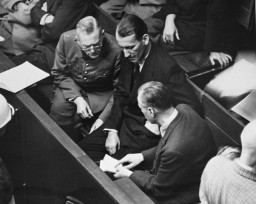
Nazi ideologue Alfred Rosenberg was found guilty at the postwar trial of leading Nazi officials, and was sentenced to death. Learn more about his roles.
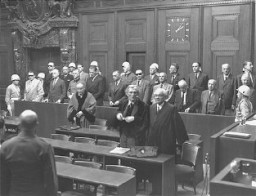
The Herzogenbusch concentration camp in the Netherlands began functioning in January 1943. Learn about its establishment, administration, prisoners, and conditions there.
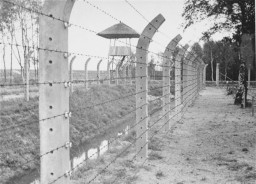
Learn about the subcamps of the SS-established Herzogenbusch concentration camp in the Netherlands, including Amersfoort, Arnheim, Eindhoven, and others.
Moringen, Uckermark, and Litzmannstadt were reform camps established to confine young people who were deemed to have strayed from Nazi norms and ideals. Learn more
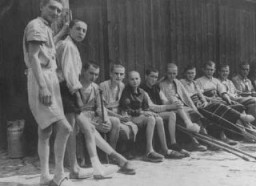
The Uckermark camp was one of the so-called youth protection camps that the Nazi regime established for young people who were alleged to have strayed from Nazi norms and ideals.
The Moringen camp was one of the so-called youth protection camps that the Nazi regime established for young people who were alleged to have strayed from Nazi norms and ideals.
What is the difference between a “concentration camp” and a “killing center”? Learn about the history of these terms and what they meant in the context of Nazi oppression and murder.
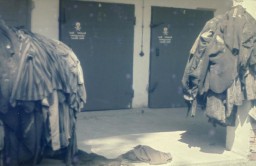
Learn about the administration and commandants of the Auschwitz camp complex in German-occupied Poland.
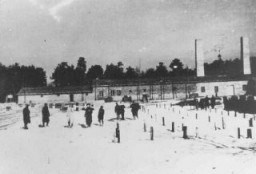
In July 1995, Bosnian Serb forces killed as many as 8,000 Bosniaks from Srebrenica. It was the largest massacre in Europe since the Holocaust.
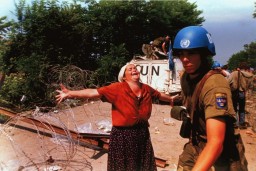
The Germans established the Blechhammer camp as a subcamp of Auschwitz in April 1941. Learn about the camp's history and conditions there.
Paul von Hindenburg was President of the Weimar Republic from 1925 until his death in 1934. Learn more about his life and role in the Nazi rise to power.
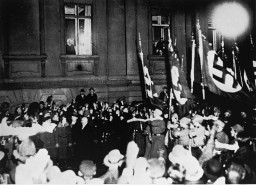
German General Erich Ludendorff was a key proponent of the fictitious “Stab-in-the-Back” myth which blamed Jews and others for Germany’s defeat in WWI.
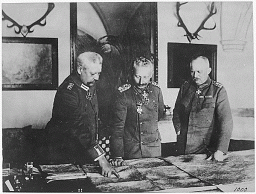
Nazi student groups played a key role in aligning German universities with Nazi ideology and in solidifying Nazi power.

The Riegner telegram detailed the Nazi plan to systematically murder European Jews. It was sent to the British and American governments in August 1942.
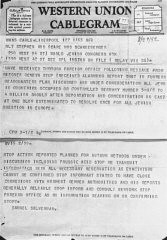
Leading German physicians and administrators were put on trial for their role during the Holocaust. The resulting Nuremberg Code was a landmark document on medical ethics. Learn more
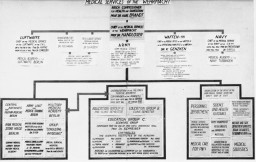
The Nazis used propaganda to to facilitate persecution, war, and ultimately genocide. Read more about the cult of the leader around Adolf Hitler.
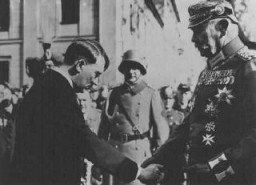
The Nazis used propaganda to promote their ideas and beliefs about a "national community." Read more about the principles, goals, and strategies of Nazi propaganda.
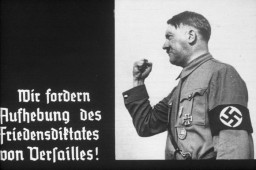
The Nazi Party targeted German youth as a special audience for its propaganda messages. Read more about the indoctrination of youth.
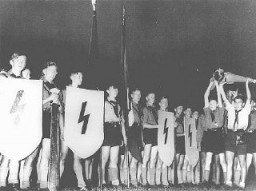
After WWII, prosecutors faced the challenge of assessing the guilt of propagandists whose words, images, and writings had supported Nazi brutality and mass murder.
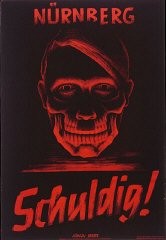
Between 1933-1945, Latin American governments officially permitted approx. 84,000 Jewish refugees. Learn more about Latin America refugee policy.

President Barack Obama visited Buchenwald concentration camp in Germany on June 5, 2009. In a speech at the site, he repudiated Holocaust denial. Browse transcript.
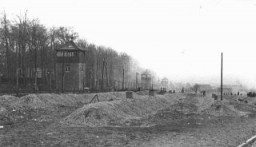
US filmmaker and photographer Julien Bryan was one of the few western photographers left in Warsaw upon the German invasion of Poland in September 1939.
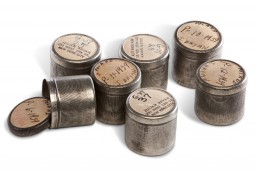
Julien Bryan’s ten-minute film Siege, first non-Nazi produced footage of the start of WWII, records horror and chaos in Warsaw following the German invasion.
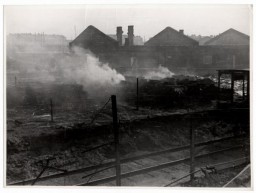
After the Holocaust, the IMT charged the first case of “incitement to genocide.” Learn more about the crime and its application in modern genocide law.
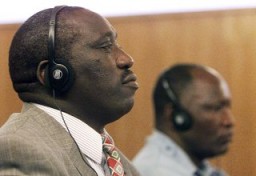
We would like to thank Crown Family Philanthropies, Abe and Ida Cooper Foundation, the Claims Conference, EVZ, and BMF for supporting the ongoing work to create content and resources for the Holocaust Encyclopedia. View the list of donor acknowledgement.